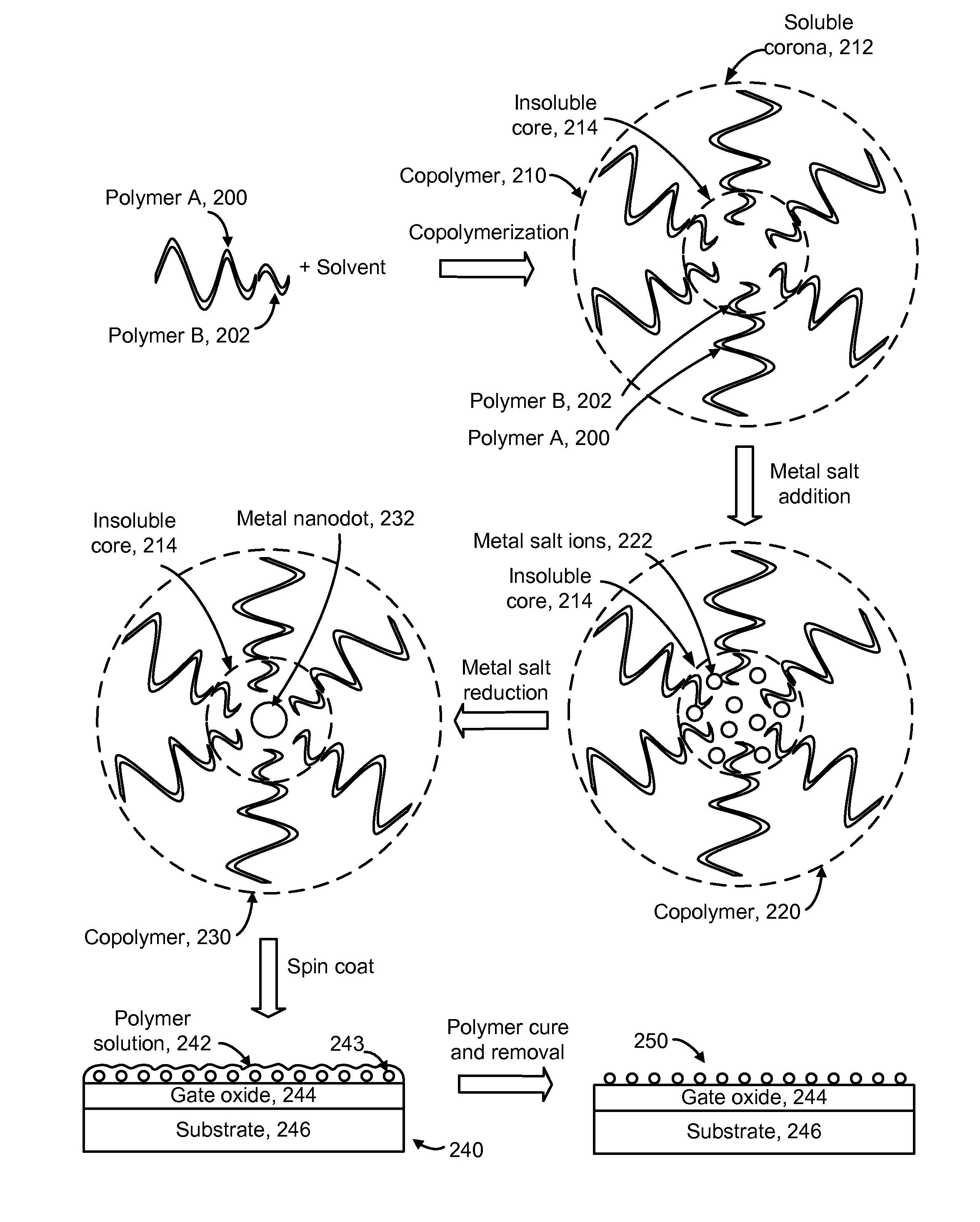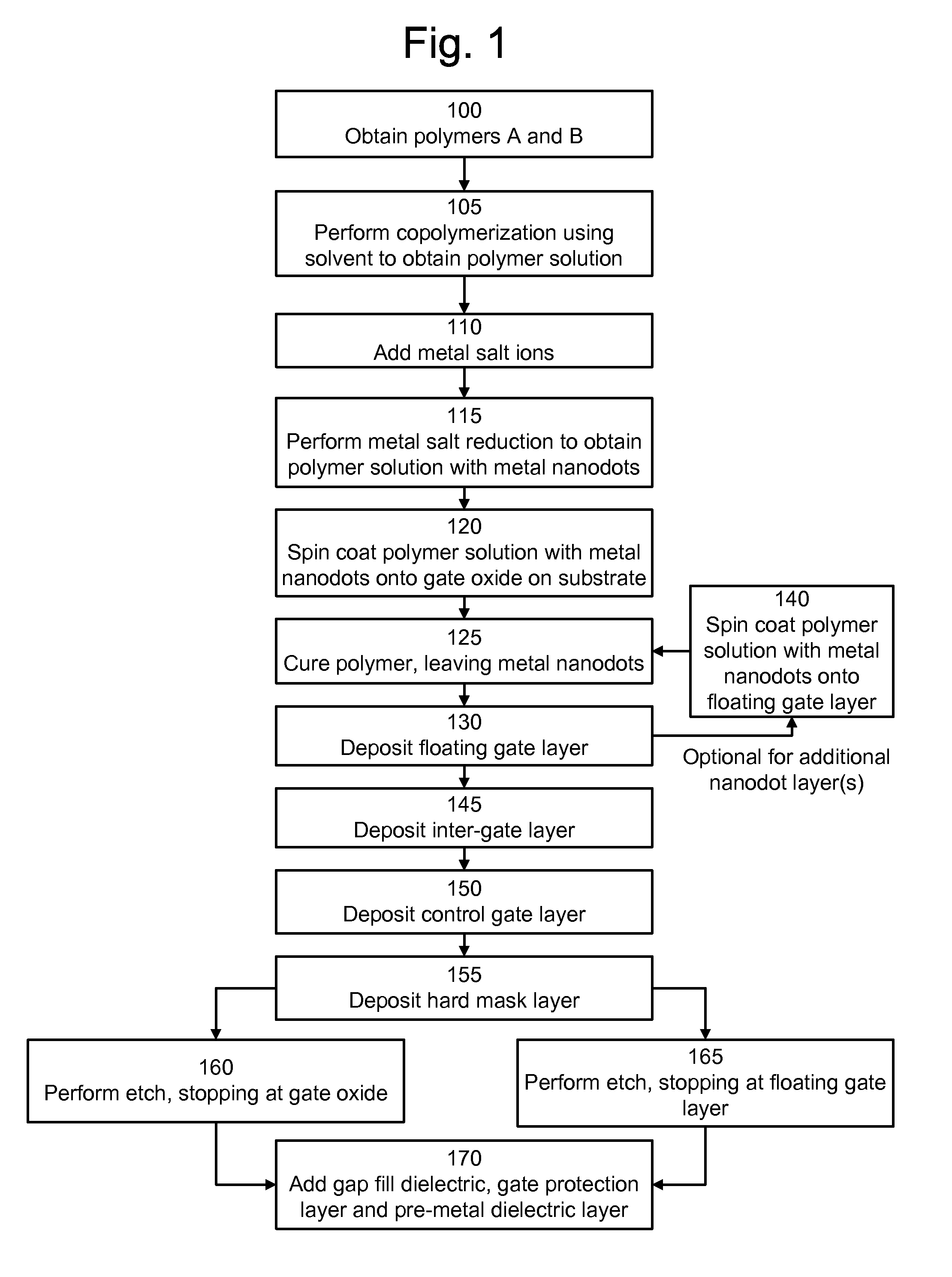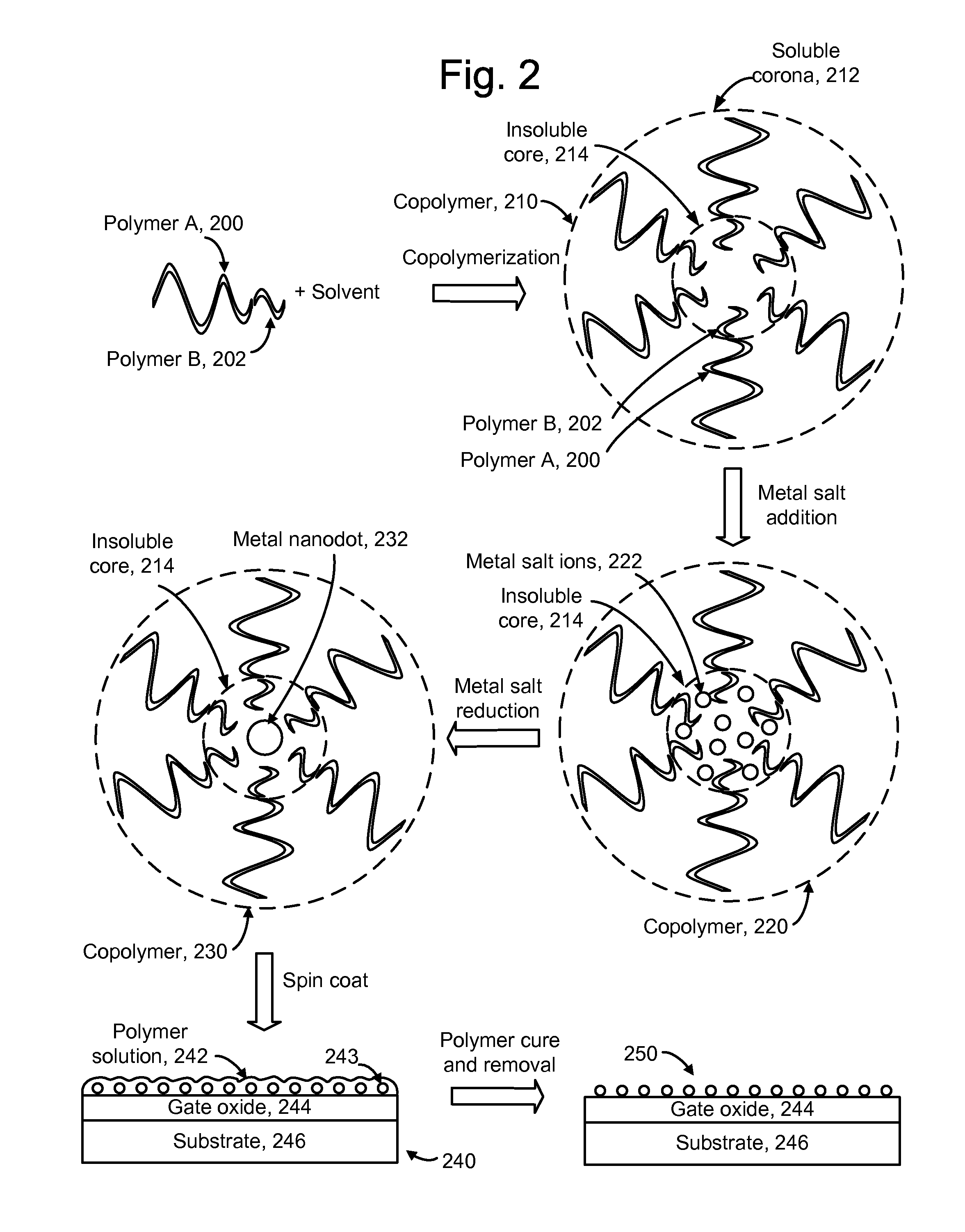Method of forming memory with floating gates including self-aligned metal nanodots using a coupling layer
a technology of metal nanodots and coupling layers, which is applied in the field of memory having charge-storing nanodots, can solve the problems that existing techniques are not satisfactory in providing nanodots with uniform size and alignmen
- Summary
- Abstract
- Description
- Claims
- Application Information
AI Technical Summary
Benefits of technology
Problems solved by technology
Method used
Image
Examples
Embodiment Construction
[0035]The present invention provides a method for fabricating memory having charge-storing, self-aligned metal nanodots by applying the nanodots to a substrate using a coupling layer.
[0036]In a storage element, nanodots can be used to store charge (e.g., electrons). The use of nanodots as charge-storing particles in memory such as non-volatile memory provides many advantages, including allowing reduced programming voltages, resulting in reduced power / current consumption in the memory device, and scaling to ever smaller dimensions in future generation memory devices. Further, nanodots are compatible with conventional fabrication techniques and materials.
[0037]During fabrication, a 2D array of nanodots is formed on a substrate with a uniform nanodot size and alignment. Vacuum deposition techniques such as sputtering and evaporation may not be adequate in controlling the alignment of the nanodots and may allow the nanodots to pile up on the edges of steps and / or trenches on the substra...
PUM
 Login to View More
Login to View More Abstract
Description
Claims
Application Information
 Login to View More
Login to View More - R&D
- Intellectual Property
- Life Sciences
- Materials
- Tech Scout
- Unparalleled Data Quality
- Higher Quality Content
- 60% Fewer Hallucinations
Browse by: Latest US Patents, China's latest patents, Technical Efficacy Thesaurus, Application Domain, Technology Topic, Popular Technical Reports.
© 2025 PatSnap. All rights reserved.Legal|Privacy policy|Modern Slavery Act Transparency Statement|Sitemap|About US| Contact US: help@patsnap.com



